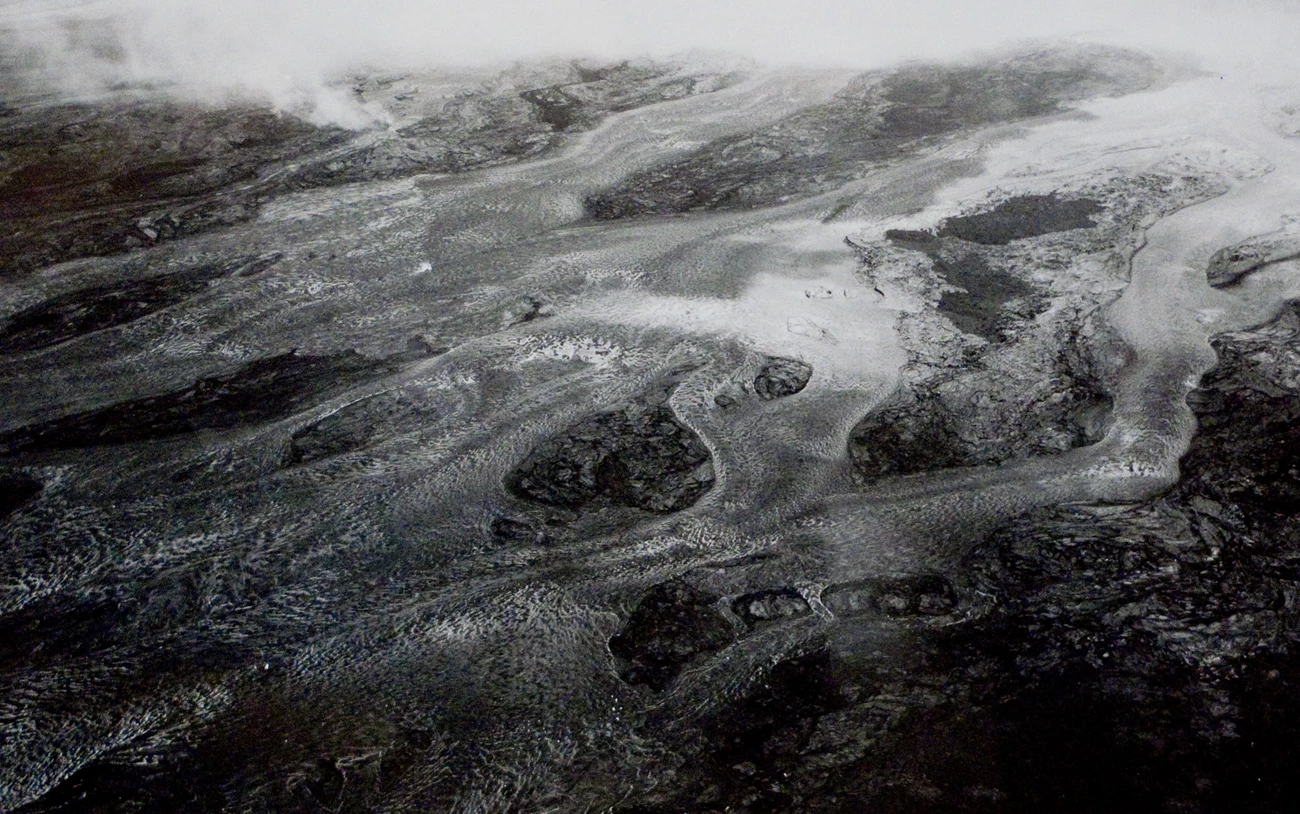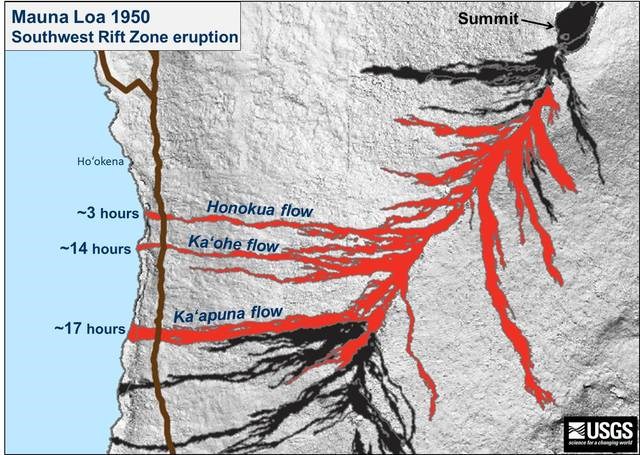|
The 1950 eruption on the Southwest Rift Zone of Mauna Loa sent massive lava flows through the upper reaches of what is now the Kahuku Unit of Hawaiʻi Volcanoes National Park. The eruption was the fastest high-volume Mauna Loa eruption in recorded history, with one flow reaching the ocean in only three hours.


However, at 10:15 p.m. a new series of fissures started to open lower on the rift, between 8,000 and 10,500 feet altitude (2,438 m to 3,200 m), and these vents became the hub of activity. Big lava flows poured both westward and southeastward from the fissures. The lava flowed down the steep western slopes of the mountain with great speed. The first western flow advanced with an average speed of nearly 6 miles an hour, and at 12:30 reached the main highway around the island, destroying part of the village of Hoʻokena-mauka. After only three hours, the Honokua flow entered the ocean at 1:02 a.m. on June 2. Two more western flows reached the ocean on the afternoon of the same day, the Kaʻohe flow was first at 12:04 p.m. followed by the Kaʻapuna flow at 3:30 p.m. Where the lava entered the sea the water boiled, many fish were killed, and great billowing clouds of steam rose 10,000 feet (3,050 m) into the air. The eruption continued with gradually abating strength until June 23. The 1950 eruption of Mauna Loa was the greatest since 1859. Although no lives were lost, it destroyed about two dozen buildings, and buried more than a mile of highway. Its six major lava flows contain on the order of one billion tons of lava. After 1950, Mauna Loa would remain quiet for a quarter century, not erupting again until 1975.
Additional Resources:
|
Last updated: January 21, 2021
